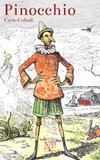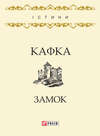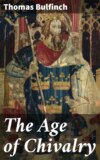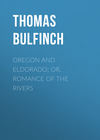Kitabı oku: «The Classic Myths in English Literature and in Art (2nd ed.) (1911)», sayfa 34
Illustrative. Myrmidons:
No, no, said Rhadamant, it were not well,
With loving souls to place a martialist;
He died in war, and must to martial fields,
Where wounded Hector lives in lasting pain,
And Achilles' Myrmidons do scour the plain.
Kyd, Spanish Tragedy
On Sisyphus, read Lewis Morris' poem in The Epic of Hades.
62. Textual. Mænad: the Mænades, from μαίνομαι (mainomai), 'to rage,' were women who danced themselves into a frenzy in the orgies or festivals of Bacchus. Cithæron: a mountain range south of Thebes and between Bœotia and Attica.
Interpretative. Antiope, philologically interpreted, may indicate the moon with face turned full upon us. That Antiope is a personification of some such natural phenomena would also appear from the significance of the names associated with hers in the myth: Nycteus, the night-man; Lycus, the man of light. Amphion and Zethus are thought, in like fashion, to represent manifestations of light; see also Castor and Pollux. Perhaps the method employed by Zethus and Amphion in building Thebes may merely symbolize the advantage of combining mechanical force with well-ordered or harmonious thought.
In Art : The Farnese Bull group (text, opp. p. 74): marble, maybe by Tauriscus and Tralles, in Naples Museum. Fig. 51: a relief in the Palazzo Spada, Rome. Modern painting: Correggio's Antiope.
63. Textual. Phrygia: a province in Asia Minor. For Minerva's protection of the olive, see 65. Tyana is a town in Cappadocia, Asia Minor.
64. Textual. Argos: the capital of Argolis in the Peloponnesus. Of Cydippe, it is told, in Ovid's Heroides and elsewhere, that, when a girl sacrificing in the temple of Diana in Delos, she was seen and loved by a youth, Acontius. He threw before her an apple, on which these words were inscribed, "I swear by the sanctuary of Diana to marry Acontius." The maiden read aloud the words and threw the apple away. But the vow was registered by Diana, who, in spite of many delays, brought about the marriage of Cydippe and her unknown lover. Polyclitus the Elder, of Argos, lived about 431 B.C., and was a contemporary of two other great sculptors, Phidias and Myron. His greatest work was the chryselephantine statue of Hera for her temple between Argos and Mycenæ.
Illustrative. Beside Gosse's Sons of Cydippe, see verses by L. J. Richardson, in The Inlander, Ann Arbor, Vol. 2, p. 2. For the story of Acontius and Cydippe, see William Morris' Earthly Paradise; and Lytton's Cydippe, or The Apples, in The Lost Tales of Miletus.
In Art. The severe design in clay by Teignmouth, of which prints may be obtained, was made to illustrate Gosse's poem.
65-66. Textual. For Cecrops, see 174. He named the city that he founded Cecropia, – a name which afterwards clung to Athens. For an excellent description of ancient weaving, see Catullus, LXIV, 304-323 (The Peleus and Thetis). For translation, see 191. Leda, mother of Castor, Pollux, Helen, and Clytemnestra (see 194 and Commentary). Danaë, mother of Perseus (see 151).
Interpretative. The waves were the coursers of Neptune, – the horses with which he scours the strand. Arachne: a princess of Lydia. It is probable that the myth symbolizes the competition in products of the loom between Attica and Asia Minor and the superior handicraft of the Athenian weavers.
Illustrative. Arachne: Shakespeare, Troilus and Cressida, V, ii; Pope, Dunciad, 4, 590. Poem: Garrick, Upon a Lady's Embroidery.
In Art. Fig. 52, in text: from a vase in St. Petersburg.
68. Textual. Diomede: for his genealogy, see Table K. Taslets: armor worn about the thighs. Cyprian: Venus. Pæan (Pæon, or Paiëon), classed by Homer among the Olympian gods, of whom he is, as his name implies, the "healer." Later, the name was applied to Æsculapius, then to any god who might repair or avert evil of any kind, as, for instance, to Apollo and to Thanatos (Death). See Armstrong's Art of Health, "So Pæan, so the powers of Health command," etc., and "the wise of ancient days Adored one power of physic, melody, and song." Pæans were chants in honor of Apollo, sung to deprecate misfortune in battle or to avert disease. Lower than the sons of Heaven: lower than the Titans, sons of Uranus (Heaven), who were plunged into Tartarus.
69. Textual. Lessing points out in his Laocoön the skill with which Homer, stating the size of the stone hurled by Minerva and the measure of the space covered by Mars, suggests the gigantic proportions of the warring divinities.
70. Textual. Family of Cadmus: see Tables D and E. Castalian Cave of Mount Parnassus, Phocis; here was the famous Delphic oracle of Apollo. Cephissus: a river running through Doris, Phocis, and Bœotia into the Eubœan Gulf; the valley of the Cephissus was noted for its fertility. Panope: a town on the Cephissus. Tyrians: Cadmus and his followers came from Tyre in Phœnicia. The Necklace of Harmonia was a fateful gift. It brought evil to whomsoever it belonged: to all the descendants of Cadmus; to Eriphyle, wife of Amphiaraüs of Argos, to whom Polynices gave it; and to the sons of Eriphyle. It was finally dedicated to Apollo in Delphi. Harmonia's robe possessed the same fatality, 187, 189. Enchelians: a people of Illyria. For the myths of Semele, see 60; of Ino, 144; of Autonoë and her son, Actæon, 95; of Agave and her son, Pentheus, 112; of Polydorus, the Labdacidæ, Œdipus, etc., 182. Eight years: the usual period of penance. Apollo, after slaying the Python, had to clear himself of defilement by a period of purification.
Interpretative. Cadmus and his Tyrians: according to the usual explanation, this myth is based upon an immigration of Phœnicians, who settled Bœotia and gave laws, the rudiments of culture (alphabet, etc.), and industrial arts to the older races of Greece. Many Theban names, such as Melicertes, Cadmus, point to a possible Phœnician origin; cf. Semitic Melkarth, and Kedem, the East. But Preller holds that two mythical personages, a Greek Cadmus and a Phœnician Cadmus, have been confounded; that the Theban Cadmus is merely the representative of the oldest Theban state; that the selection of the spot on which a heifer had lain down was a frequent practice among settlers, superstitious about the site of their new town; that the dragon typifies the cruel and forbidding nature of the uncultivated surroundings; and that the story of the dragon's teeth was manufactured to flatter the warlike spirit of the Thebans, the teeth themselves being spear points.
Harmonia, daughter of the patron deities of Thebes, is the symbol of the peace and domesticity that attend the final establishment of order in the State.
According to the Sun-and-Cloud theory of Cox, Cadmus, the Sun, pursues his sister, Europa, the broad-flushing light of Dawn, who has been carried off on a spotless cloud (the Bull). The Sun, of course, must journey farther west than Crete. The heifer that he is to follow is, therefore, still another cloud (like the cattle of the Sun, – clouds). The dragon of Mars is still a third cloud; and this the Sun dissipates. A storm follows, after which new conflicts arise between the clouds that have sprung up from the moistened earth (the harvest of armed men!). This kind of explanation, indiscriminately indulged, delights the fancy of the inventor and titillates the risibles of the reader.
Illustrative. Milton, Paradise Lost, 9, 506. The serpent that tempted Eve compared with the serpents Cadmus and "Hermione." See Byron, Don Juan, 3, 86, "You have the letters Cadmus gave – Think you he meant them for a slave?"
In Art. Fig. 54, in text: from a vase in the Naples Museum. Fig. 55 is of a vase-painting from Eretria.
71. Textual. Eurynome is represented by some as one of the Titans, the wife of Ophion. Ophion and Eurynome, according to one legend, ruled over heaven before the age of Saturn (Cronus). So Milton, Paradise Lost, 10, 580, "And fabled how the Serpent, whom they called Ophion, with Eurynome (the wide-Encroaching Eve perhaps), had first the rule Of high Olympus, thence by Saturn driven." According to Vulcan's statement (Iliad, 18), Eurynome was daughter of Oceanus and Tethys. She was mother, by Jupiter, of the Graces. Thetis: see 50. Xanthus: the principal river of Lycia in Asia Minor.
72-73. Interpretative. Latona (Leto): according to Homer, one of the deities of Olympus; a daughter of the Titans Cœus and Phœbe, whose names indicate phenomena of radiant light. She belonged, perhaps, to an ancient theogony of Asia Minor. At any rate she held at one time the rank of lawful wife to Zeus. Preller and, after him, Cox take Leto as the dusk or darkness. Cox traces the word to the root of Lethe (the forgetful), but Preller is doubtful. Possibly Leto and Leda, the mother of the bright Castor and Pollux, have something in common. The wanderings of Latona may be the weary journey of the night over the mountain tops, both before and after the Sun (Apollo) is born in Delos (the land of Dawn).
Illustrative. Milton, Arcades, 20, and Sonnet XII, "On the detraction which followed upon my writing certain treatises."
74. Textual. Hyperboreans: those who dwell in the land beyond the North. Pæan, see C. 68. Tityus: an earthborn giant; condemned to the underworld, he lay stretched over nine acres while two vultures devoured his liver.
Interpretative. Python: in many savage myths, a serpent, a frog, or a lizard that drinks up all the waters, and is destroyed by some national hero or god. As Mr. Lang says: "Whether the slaying of the Python was or was not originally an allegory of the defeat of winter by sunlight, it certainly, at a very early period, became mixed up with ancient legal ideas and local traditions. It is almost as necessary for a young god or hero to slay monsters as for a young lady to be presented at court; and we may hesitate to explain all these legends of a useful feat of courage as nature myths" (Myth, Ritual, etc., 2, 196). Compare the feats of Hercules, Jason, Bellerophon, Perseus, St. George and the Dragon, Sigurd, and Jack the Giant Killer. Commentators take Python to be the rigor of winter, or the darkness of night, or a "black storm-cloud which shuts up the waters" (Cox). It is not impossible that the Python was the sacred snake of an older animal worship superseded by that of Apollo. (See also C. 38.)
75. Textual. The Tyrian hue is purple, made from the juice of the murex, or purple shellfish. On the leaves of the hyacinth were inscribed characters like Ai, Ai, the Greek exclamation of woe. It is evidently not our modern hyacinth that is here described, but perhaps some species of iris, or of larkspur, or pansy. The meaning of the name is also uncertain, but the best authorities favor youthful. A festival called the Hyacinthia was celebrated, in commemoration of the myth, over a large part of the Peloponnesus. It lasted three days, probably in the first half of July. It consisted of chants of lamentation and fasting during the first and last days; during the second day, of processions, a horse race, joyous choral songs, dances, feasting, and sacrifice.
Interpretative. Most scholars consider Hyacinthus to be the personification of the blooming vegetation of spring, which withers under the heats of summer. The Hyacinthian festival seems to have celebrated – like the Linus festival and the Eleusinian – the transitory nature of life and the hope of immortality.
Illustrative. Keats, Endymion, "Pitying the sad death Of Hyacinthus, when the cool breath Of Zephyr slew him" (see context); Milton, Lycidas, "Like to that sanguine flower inscribed with woe"; On the Death of a Fair Infant, 4.
In Art. Fig. 58, in text, is of a marble group in the Hope Collection.
76. Textual. Clymene: a daughter of Oceanus and Tethys. Chrysolite: or gold stone, our topaz. Daystar: Phosphor, see 38 (II). Ambrosia (ἀμβρόσιος, ἄμβροτος, ἀ-βροτός), immortal, – here, "food for the immortals." Turn off to the left: indicating the course of the sun, west by south. The Serpent, or Dragon: a constellation between the Great and Little Bears. Boötes: the constellation called the Wagoner. The limits of the Scorpion were restricted by the insertion of the sign of the Scales. Athos: a mountain forming the eastern of three peninsulas south of Macedonia. Mount Taurus: in Armenia. Mount Tmolus: in Lydia. Mount Œte: between Thessaly and Ætolia, where Hercules ascended his funeral pile. Ida: the name of two mountains, – one in Crete, where Jupiter was nurtured by Amalthea, the other in Phrygia, near Troy. Mount Helicon: in Bœotia, sacred also to Apollo. Mount Hæmus: in Thrace. Ætna: in Sicily. Parnassus: in Phocis; one peak was sacred to Apollo, the other to the Muses. The Castalian Spring, sacred to the Muses, is at the foot of the mountain; Delphi is near by. Rhodope: part of the Hæmus range of mountains. Scythia: a general designation of Europe and Asia north of the Black Sea. Caucasus: between the Black and Caspian seas. Mount Ossa: associated with Mount Pelion in the story of the giants, who piled one on top of the other in their attempt to scale Olympus. These mountains, with Pindus, are in Thessaly. Libyan desert: in Africa. Libya was fabled to have been the daughter of Epaphus, king of Egypt. Tanaïs: the Don, in Scythia. Caïcus: a river of Greater Mysia, flowing into the sea at Lesbos. Xanthus and Mæander: rivers of Phrygia, flowing near Troy. Caÿster: a river of Ionia, noted for its so-called "tuneful" swans. For Nereus, Doris, Nereïds, etc., see 50 and 52. Eridanus: the mythical name of the river Po in Italy (amber was found on its banks). Naiads, see 52 (6).
Interpretative. Apollo assumed many of the attributes of Helios, the older divinity of the sun, who is ordinarily reputed to be the father of Phaëthon (ordinarily anglicized Phaëton). The name Phaëthon, like the name Phœbus, means the radiant one. The sun is called both Helios Phaëthon and Helios Phœbus in Homer. It was an easy feat of the imagination to make Phaëthon the incautious son of Helios, or Apollo, and to suppose that extreme drought is caused by his careless driving of his father's chariot. The drought is succeeded by a thunderstorm; and the lightning puts an end to Phaëthon. The rain that succeeds the lightning is, according to Cox, the tears of the Heliades. It is hardly wise to press the analogy so far, unless one is prepared to explain the amber in the same way.
Illustrative. Milman in his Samor alludes to the story. See also Chaucer, Hous of Fame, 435; Spenser, Faerie Queene, 1, 4, 9; Shakespeare, Richard II, III, iii; Two Gentlemen of Verona, III, i; 3 Henry VI, I, iv; II, vi; Romeo and Juliet, III, ii. Poems: Prior, Female Phaëton; J. G. Saxe, Phaëton; and G. Meredith, Phaëton. For description of the palace and chariot of the Sun, see Landor, Gebir, Bk. I.
In Art : Fig. 59, in text: a relief on a Roman sarcophagus in the Louvre.
77. Textual. For the siege of Troy, see Chap. XXII. Atrides (Atreides): the son of Atreus, Agamemnon. The ending -ides means son of, and is used in patronymics; for instance, Pelides (Peleides), Achilles; Tydides, Diomede, son of Tydeus. The ending -is, in patronymics, means daughter of; as Tyndaris, daughter of Tyndarus (Tyndareus), Helen; Chryseïs, daughter of Chryses.
Interpretative. Of this incident Gladstone, in his primer on Homer, says: "One of the greatest branches and props of morality for the heroic age lay in the care of the stranger and the poor… Sacrifice could not be substituted for duty, nor could prayer. Such, upon the abduction of Chryseïs, was the reply of Calchas the Seer: nothing would avail but restitution."
78. The Dynasty of Tantalus and its Connections. (See also Table I.)
Table F


Pelops. It is said that the goddess Demeter in a fit of absent-mindedness ate the shoulder of Pelops. The part was replaced in ivory when Pelops was restored to life. Mount Cynthus: in Delos, where Apollo and Diana were born.
Interpretative. Max Müller derives Niobe from the root snu, or snigh, from which come the words for snow in the Indo-European languages. In Latin and Greek, the stem is Niv, hence Nib, Niobe. The myth, therefore, would signify the melting of snow and the destruction of its icy offspring under the rays of the spring sun (Sci. Relig. 372). According to Homer (Iliad, 24, 611), there were six sons and six daughters. After their death no one could bury them, since all who looked on them were turned to stone. The burial was, accordingly, performed on the tenth day after the massacre, by Jupiter and the other gods. This petrifaction of the onlookers may indicate the operation of the frost. Cox says that Niobe, the snow, compares her golden-tinted, wintry mists or clouds with the splendor of the sun and moon. Others look upon the myth as significant of the withering of spring vegetation under the heats of summer (Preller). The latter explanation is as satisfactory, for spring is the child of winter (Niobe).
Illustrative. Pope, Dunciad, 2, 311; Lewis Morris, Niobe on Sipylus (Songs Unsung); Byron's noble stanza on fallen Rome, "The Niobe of nations! there she stands, Childless and crownless, in her voiceless woe," etc. (Childe Harold, 4, 79); W. S. Landor, Niobe; Frederick Tennyson, Niobe. On Tantalus, see Lewis Morris, Tantalus, in The Epic of Hades. On Sir Richard Blackmore, a physician and poor poet, Thomas Moore writes the following stanza:
'T was in his carriage the sublime
Sir Richard Blackmore used to rhyme,
And, if the wits don't do him wrong,
'Twixt death and epics passed his time,
Scribbling and killing all day long;
Like Phœbus in his car at ease,
Now warbling forth a lofty song,
Now murdering the young Niobes.
In Art. The restoration of the statue of Niobe, Mount Sipylus; of extreme antiquity. The St. Petersburg relief (Fig. 61, in text) is probably the best group. Figs. 60 and 62 are from the ancient marbles in the Uffizi, Florence. The fragments of the latter group were discovered in 1583 near the Porta San Giovanni, Rome. The figure of the mother, clasping the little girl who has run to her in terror, is one of the most admired of the ancient statues. It ranks with the Laocoön and the Apollo Belvedere among the masterpieces of art. The following is a translation of a Greek epigram supposed to relate to this statue:
To stone the gods have changed her, but in vain;
The sculptor's art has made her breathe again.
There is also a fine figure of a daughter of Niobe in the Vatican, Rome; and there are figures in the Louvre. Reinach in his Apollo attributes the originals to Scopas.
79. Interpretative. The month in which the festival of Linus took place was called the Lambs' Month: the days were the Lambs' Days, on one of which was a massacre of dogs. According to some, Linus was a minstrel, son of Apollo and the Muse Urania, and the teacher of Orpheus and Hercules.
80. Centaurs. Monsters represented as men from the head to the loins, while the remainder of the body was that of a horse. Centaurs are the only monsters of antiquity to which any good traits were assigned. They were admitted to the companionship of men. Chiron was the wisest and justest of the Centaurs. At his death he was placed by Jupiter among the stars as the constellation Sagittarius (the Archer). Messenia: in the Peloponnesus. Æsculapius: there were numerous oracles of Æsculapius, but the most celebrated was at Epidaurus. Here the sick sought responses and the recovery of their health by sleeping in the temple. It has been inferred from the accounts that have come down to us that the treatment of the sick resembled what is now called animal magnetism or mesmerism.
Serpents were sacred to Æsculapius, probably because of a superstition that those animals have a faculty of renewing their youth by a change of skin. The worship of Æsculapius was introduced into Rome in a time of great sickness. An embassy, sent to the temple of Epidaurus to entreat the aid of the god, was propitiously received; and on the return of the ship Æsculapius accompanied it in the form of a serpent. Arriving in the river Tiber, the serpent glided from the vessel and took possession of an island, upon which a temple was soon erected to his honor.
Interpretative. The healing powers of nature may be here symbolized. But it is more likely that the family of Asclepiadæ (a medical clan) invented Asklepios as at once their ancestor and the son of the god of healing, Apollo.
Illustrative. Milton, Paradise Lost, 9, 506; Shakespeare, Pericles, III, ii; Merry Wives, II, iii.
In Art. Æsculapius (sculpture), Vatican; also the statue in the Uffizi, Florence (text, Fig. 63). Thorwaldsen's (sculpture) Hygea (Health) and Æsculapius, Copenhagen.
81. Interpretative. Perhaps the unceasing and unvarying round of the sun led to the conception of him as a servant. Max Müller cites the Peruvian Inca who said that if the sun were free, like fire, he would visit new parts of the heavens. "He is," said the Inca, "like a tied beast who goes ever round and round in the same track" (Chips, etc., 2, 113). Nearly all Greek heroes had to undergo servitude, – Hercules, Perseus, etc. No stories are more beautiful or more lofty than those which express the hope, innate in the human heart, that somewhere and at some time some god has lived as a man among men and for the good of men. Such stories are not confined to the Greeks or the Hebrews.
Illustrative . R. Browning, Apollo and the Fates; Edith M. Thomas, Apollo the Shepherd; Emma Lazarus, Admetus; W. M. W. Call, Admetus.
83. Textual. Alcestis was a daughter of the Pelias who was killed at the instigation of Medea (167). In that affair Alcestis took no part. For her family, see Table G. She was held in the highest honor in Greek fable, and ranked with Penelope and Laodamia, the latter of whom was her niece. To explain the myth as a physical allegory would be easy, but is it not more likely that the idea of substitution finds expression in the myth? – that idea of atonement by sacrifice, which is suggested in the words of Œdipus at Colonus (185), "For one soul working in the strength of love Is mightier than ten thousand to atone." Koré (the daughter of Ceres): Proserpina. Larissa: a city of Thessaly, on the river Peneüs.
Illustrative. Milton's sonnet, On his Deceased Wife:
Methought I saw my late espousèd saint
Brought to me like Alcestis from the grave,
Whom Jove's great son to her glad husband gave,
Rescued from death by force, though pale and faint.
Chaucer, Legende of Good Women, 208 et seq.; Court of Love (?), 100 et seq.
Poems. Robert Browning's noble poem, Balaustion's Adventure, purports to be a paraphrase of the Alcestis of Euripides, but while it maintains the classical spirit, it is in execution an original poem. The Love of Alcestis, by William Morris; Mrs. Hemans, The Alcestis of Alfieri, and The Death Song of Alcestis; W. S. Landor, Hercules, Pluto, Alcestis, and Admetus; Alcestis: F. T. Palgrave, W. M. W. Call, John Todhunter (a drama).
In Art. Fig. 64, in text, Naples Museum; also the relief on a Roman sarcophagus in the Vatican.
84. Textual. This Laomedon was descended, through Dardanus (the forefather of the Trojan race), from Jupiter and the Pleiad Electra. For further information about him, see 119, 161, and Table I.
Interpretative. Apollo evidently fulfills, under Laomedon, his function as god of colonization.
85-86. Textual. For Pan, see 43; for Tmolus, 76. Peneüs: a river in Thessaly, which rises in Mount Pindus and flows through the wooded valley of Tempe. Dædal: variously adorned, variegated. Midas was king of Phrygia (see 113).
Illustrative. The story of King Midas has been told by others with some variations. Dryden, in the Wife of Bath's Tale, makes Midas' queen the betrayer of the secret:
This Midas knew, and durst communicate
To none but to his wife his ears of state.
87. Illustrative. M. Arnold, Empedocles (Song of Callicles); L. Morris, Marsyas, in The Epic of Hades; Edith M. Thomas, Marsyas; E. Lee-Hamilton, Apollo and Marsyas.
In Art. Raphael's drawing, Apollo and Marsyas (Museum, Venice); Bordone's Apollo, Marsyas, and Midas (Dresden); the Græco-Roman sculpture, Marsyas (Louvre); Marsyas (or Dancing Faun), in the Lateran, Rome.
89. Textual. Daphne was a sister of Cyrene, another sweetheart of Apollo's (145). Delphi, in Phocis, and Tenedos, an island off the coast of Asia Minor, near Troy, were celebrated for their temples of Apollo. The latter temple was sacred to Apollo Smintheus, the Mouse-Apollo, probably because he had rid that country of mice as St. Patrick rid Ireland of snakes and toads. Dido: queen of Carthage (252), whose lover, Æneas, sailed away from her.
Interpretative. Max Müller's explanation is poetic though not philologically probable. "Daphne, or Ahanâ, means the Dawn. There is first the appearance of the dawn in the eastern sky, then the rising of the sun as if hurrying after his bride, then the gradual fading away of the bright dawn at the touch of the fiery rays of the sun, and at last her death or disappearance in the lap of her mother, the earth." The word Daphne also means, in Greek, a laurel; hence the legend that Daphne was changed into a laurel tree (Sci. Relig., 378, 379). Others construe Daphne as the lightning. It is, however, very probable that the Greeks of the myth-making age, finding certain plants and flowers sacred to Apollo, would invent stories to explain why he preferred the laurel, the hyacinth, the sunflower, etc. "Such myths of metamorphoses" are, as Mr. Lang says, "an universal growth of savage fancy, and spring from a want of a sense of difference between men and things" (Myth, Ritual, etc., 2, 206).
Illustrative. Shakespeare, Midsummer Night's Dream, II, ii; Taming of the Shrew, Induction ii; Troilus and Cressida, I, i; Milton, Comus, 59, 662; Hymn on the Nativity, II. 176-180, Vacation, 33-40; Paradise Lost, 4, 268-275; Paradise Regained, 2, 187; Lord de Tabley (Wm. Lancaster), Daphne, "All day long, In devious forest, Grove, and fountain side, The god had sought his Daphne," etc.; Lyly, King Mydas; Apollo's Song to Daphne; Frederick Tennyson, Daphne. Waller applies this story to the case of one whose amatory verses, though they did not soften the heart of his mistress, yet won for the poet widespread fame:
Yet what he sung in his immortal strain,
Though unsuccessful, was not sung in vain.
All but the nymph that should redress his wrong,
Attend his passion and approve his song.
Like Phœbus thus, acquiring unsought praise,
He caught at love and filled his arms with bays.
In Art. Fig. 67, in text; Bernini's Apollo and Daphne, in the Villa Borghese, Rome (see text, opp. p. 112). Painting: G. F. Watts' Daphne.
91. Illustrative. Hood, Flowers, "I will not have the mad Clytia, Whose head is turned by the sun," etc.; W. W. Story, Clytie; Mrs. A. Fields, Clytia. The so-called bust of Clytie (discovered not long ago) is possibly a representation of Isis.
93. Textual. Elis: northwestern part of the Peloponnesus. Alpheüs: a river of Elis flowing to the Mediterranean. The river Alpheüs does in fact disappear under ground, in part of its course, finding its way through subterranean channels, till it again appears on the surface. It was said that the Sicilian fountain Arethusa was the same stream, which, after passing under the sea, came up again in Sicily. Hence the story ran that a cup thrown into the Alpheüs appeared again in the Arethusa. It is, possibly, this fable of the underground course of Alpheüs that Coleridge has in mind in his dream of Kubla Khan:
In Xanadu did Kubla Khan
A stately pleasure-dome decree:
Where Alph, the sacred river, ran
Through caverns measureless to man,
Down to a sunless sea.
In one of Moore's juvenile poems he alludes to the practice of throwing garlands or other light objects on the stream of Alpheüs, to be carried downward by it, and afterward reproduced at its emerging, "as an offering To lay at Arethusa's feet."
The Acroceraunian Mountains are in Epirus in the northern part of Greece. It is hardly necessary to point out that a river Arethusa arising there could not possibly be approached by an Alpheüs of the Peloponnesus. Such a criticism of Shelley's sparkling verses would however be pedantic rather than just. Probably Shelley uses the word Acroceraunian as synonymous with steep, dangerous. If so, he had the practice of Ovid behind him (Remedium Amoris, 739). Mount Erymanthus: between Arcadia and Achaia. The Dorian deep: the Peloponnesus was inhabited by descendants of the fabulous Dorus. Enna: a city in the center of Sicily. Ortygia: an island on which part of the city of Syracuse is built.
Illustrative. Milton, Arcades, 30; Lycidas, 132; Margaret J. Preston, The Flight of Arethusa; Keats, Endymion, Bk. 2, "On either side out-gushed, with misty spray, A copious spring."
95. See genealogical table E for Actæon. In this myth Preller finds another allegory of the baleful influence of the dog days upon those exposed to the heat. Cox's theory that here we have large masses of cloud which, having dared to look upon the clear sky, are torn to pieces and scattered by the winds, is principally instructive as illustrating how far afield theorists have gone, and how easy it is to invent ingenious explanations.
Illustrative. Shakespeare, Merry Wives, II, i; III, ii; Titus Andronicus, II, iii; Shelley, Adonais, 31, "Midst others of less note, came one frail Form," etc., a touching allusion to himself; A. H. Clough, Actæon; L. Morris, Actæon (Epic of Hades).
96. Chios: an island in the Ægean. Lemnos: another island in the Ægean, where Vulcan had a forge.
Interpretative. The ancients were wont to glorify in fable constellations of remarkable brilliancy or form. The heavenly adventures of Orion are sufficiently explained by the text.
Illustrative. Spenser, Faerie Queene, 1, 3, 31; Milton, Paradise Lost, 1, 299, "Natheless he so endured," etc.; Longfellow, Occultation of Orion; R. H. Horne, Orion; Charles Tennyson Turner, Orion (a sonnet).
97. Electra. See genealogical table I. See same table for Merope, the mother of Glaucus and grandmother of Bellerophon (155).


















